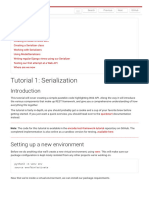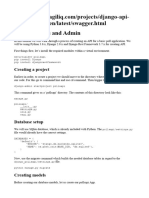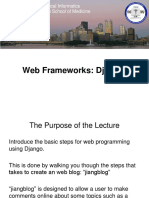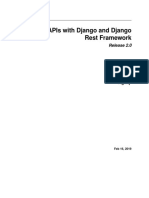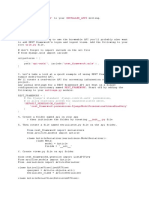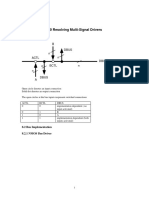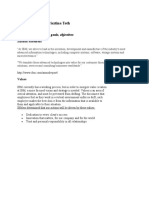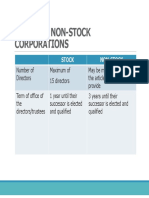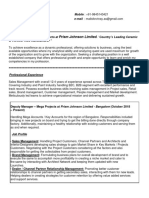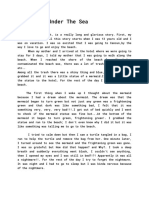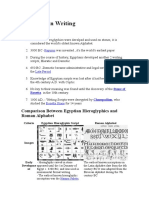0% found this document useful (0 votes)
352 views11 pagesDjango and DRF Cheat Sheet
The Django Cheat Sheet serves as a reference for both beginner and advanced developers, covering essential commands for creating projects, apps, and templates. It includes instructions for setting up Django Rest Framework, serialization, and building views, as well as managing models and URLs. Additionally, it provides guidance on installing Django and creating virtual environments for project isolation.
Uploaded by
shindepankaj562Copyright
© © All Rights Reserved
We take content rights seriously. If you suspect this is your content, claim it here.
Available Formats
Download as DOCX, PDF, TXT or read online on Scribd
0% found this document useful (0 votes)
352 views11 pagesDjango and DRF Cheat Sheet
The Django Cheat Sheet serves as a reference for both beginner and advanced developers, covering essential commands for creating projects, apps, and templates. It includes instructions for setting up Django Rest Framework, serialization, and building views, as well as managing models and URLs. Additionally, it provides guidance on installing Django and creating virtual environments for project isolation.
Uploaded by
shindepankaj562Copyright
© © All Rights Reserved
We take content rights seriously. If you suspect this is your content, claim it here.
Available Formats
Download as DOCX, PDF, TXT or read online on Scribd
/ 11





